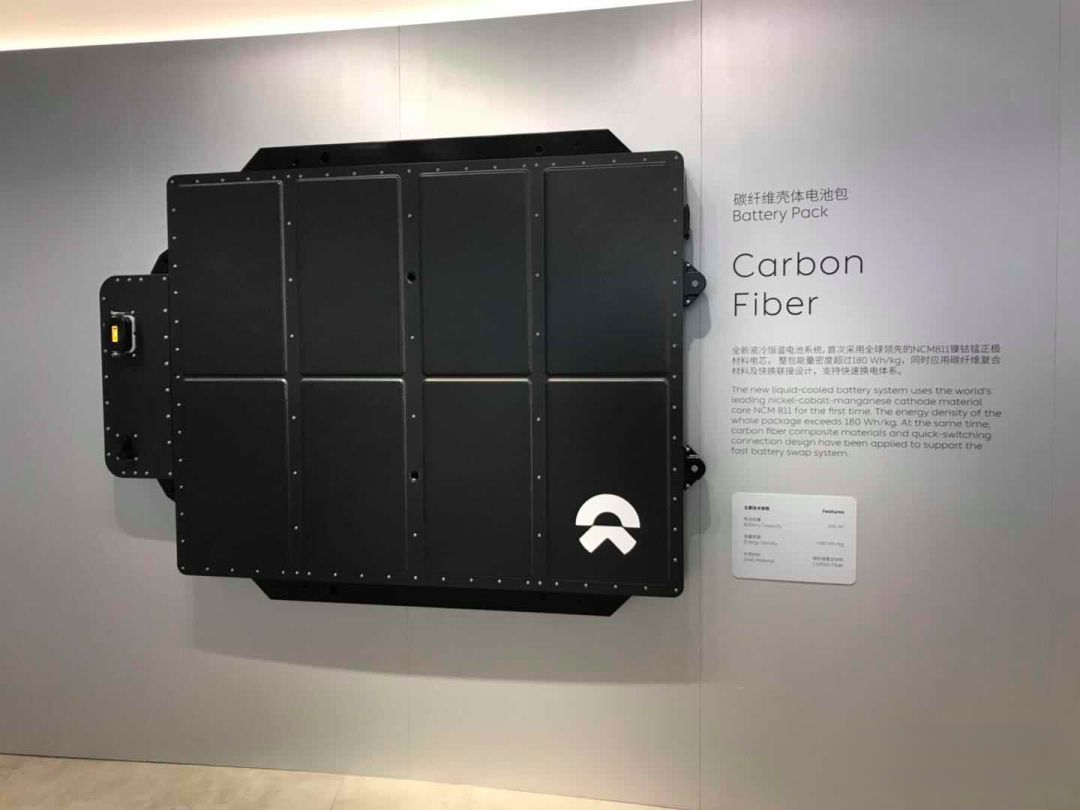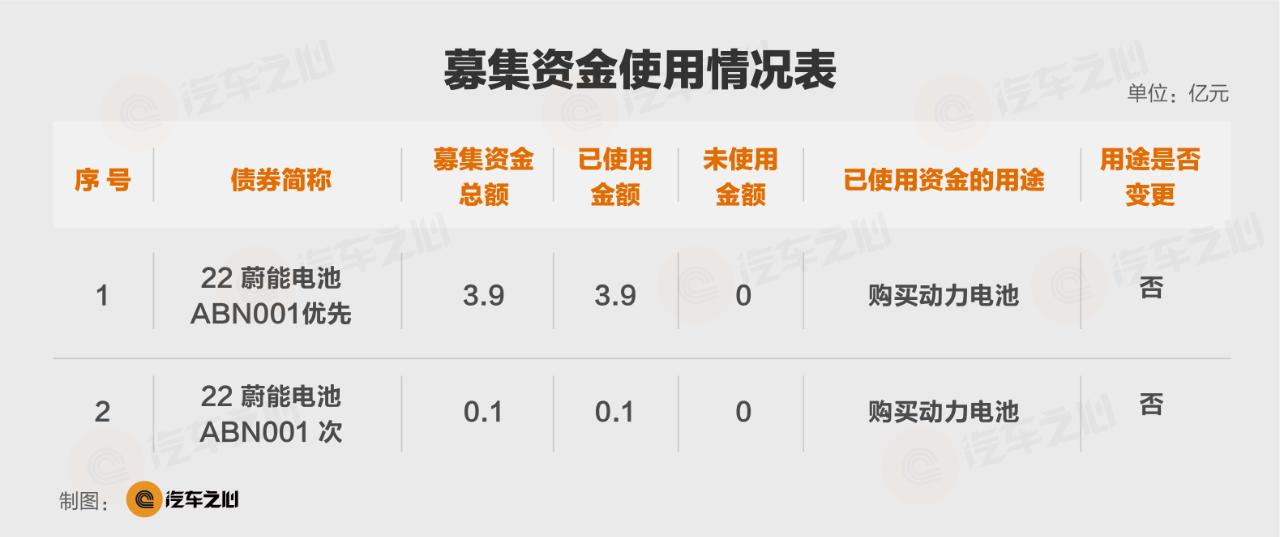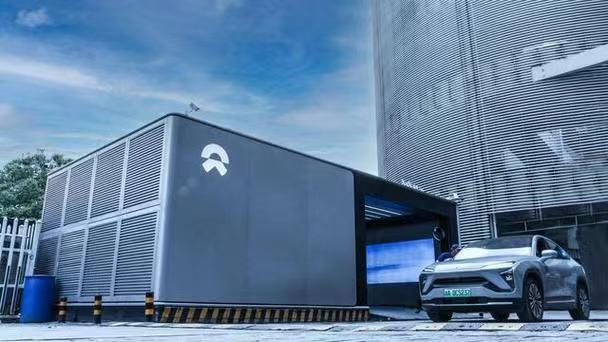Author: Liu Zhicheng
On March 28th, NIO’s third-generation battery swap station made its debut in Haikou and will simultaneously launch ten third-generation battery swap stations in ten locations across the country in early April.
Previously, NIO had publicly disclosed that it plans to build 1000 new battery swap stations this year.
Whenever NIO releases new plans for battery swap stations, concerns about the “burning money” of the NIO battery swap model arise, and people can’t help but do their own calculations: is it worth building so many high-cost battery swap stations?
In my opinion, battery swap stations are a solid “good business” for NIO, but currently, the value it brings is not profitability.
Even this business will still be in a state of loss for a long time.
1000 new battery swap stations will be built this year, and the third-generation battery swap station will be put into use in April
Public information shows that NIO, which built the first battery swap station, currently has 1323 battery swap stations, while the main battery swap stations for the travel market, ODD and EEE (owned by Geely), have 778 and 74 stations respectively.
In the situation of leading the number of battery swap stations, NIO has accelerated its construction plans for battery swap stations this year. NIO will build 1000 new battery swap stations this year, accumulating over 2300 battery swap stations.
Of the new battery swap stations, around 600 will be urban battery swap stations, focusing on third- and fourth-tier cities and counties with a certain user base but no battery swap stations yet. The other 400 will be high-speed battery swap stations, accelerating the layout of the high-speed battery swap network in 9 vertical and 9 horizontal 19 city clusters.
At the same time, NIO also announced its third-generation battery swap station and plans to put it into use in April. The new battery swap stations this year will also be mainly third-generation battery swap stations.
Compared to the second-generation station, NIO’s third-generation station has increased battery compartments to 21 and can serve up to 408 times per day, a 30% increase over the second-generation station. It adopts a brand new three-workshop collaborative operation mechanism, minimizes the battery flow path, and shortens the battery swap time by 20\%.
In addition, the third-generation battery swap station will be equipped with two LIDARs and two NVIDIA Orin X chips, with a single-station computing power of 508 TOPS, giving it the capability of “unattended operation”.“`
“One is that we hope to further improve the intelligence of battery replacement stations, enhance the safety and success rate of the entire parking process by using sensors in the battery replacement stations. In the future, it may be possible to achieve an unmanned state and reduce operating costs. The second is to consider the future. Not all multi-platform models have intelligent driving capabilities. If battery replacement stations can interact and guide with other models, they can improve the battery replacement experience.” said Yang Chao, the head of NIO Energy product development, at a media communication meeting.
In addition to being more efficient and cost-effective, the third-generation battery replacement station will also be compatible with the Alps brand.
Alps is a sub-brand launched by NIO for the entry-level market, with vehicle prices ranging from 150,000 yuan to 300,000 yuan. The planned number of models is half of the NIO brand, and bulk deliveries are expected to start in 2024.
The launch of the Alps brand can improve NIO’s product layout and quickly expand NIO’s market share.
It can be seen from the upcoming state of the Alps that NIO’s accelerated construction of third-generation battery replacement stations is largely for consumers to obtain a good “battery replacement experience” service.
A good business of “Price reduction to attract customers” and increasing experience
Building battery replacement stations, although it makes NIO bear the blame of being a spendthrift and burning cash, in my opinion, battery replacement stations are a real “good business” for NIO.
It is not the revenue generated by the battery replacement business itself, but the value that the battery replacement station can bring to NIO.
Firstly, under the battery replacement model, the separation of the vehicle and the battery can naturally alleviate users’ anxiety about mileage and greatly improve the user experience.
Secondly, the most intuitive and effective advantage of the battery replacement model is the “discount range”. From the product price point of view, NIO’s various models have a guide price of over 300,000 yuan, mainly targeting the mid-to-high-end passenger car market. However, in the vehicle-battery separation model, NIO can have a “discount interval” of 70,000 yuan, reducing the consumer’s purchase cost and achieving market penetration.
When purchasing a car, if consumers choose the BaaS battery rental plan, the price of a NIO ET5 with a guide price of 328,000 yuan can be reduced to 258,000 yuan.

“`Although NIO has not disclosed the proportion of BaaS (Battery as a Service) users among its new customers, the proportion had reached 40% in December 2020 and increased to 55% by December 2021.
Combining with NIO’s “Da Kuobu” building strategy, it is speculated that the proportion of new users adopting BaaS solutions has increased.
While the discount of CNY 70,000 can be recovered through paying the battery rental fee, the data from the survey shows that the vehicle renewal cycle for Chinese car owners is approximately 6-8 years. The rental fee for 70kWh/75kWh battery is CNY 980/month and CNY 1480/month for 100kWh battery.
If the cycle is calculated as 6 years, the cumulative rental fee for vehicle owners are CNY 70,500 and CNY 106,500 for the two types of battery respectively. Rather than a price reduction, it is more of an additional choice for vehicle owners to pay CNY 70,000 in installments when purchasing the vehicle.
The discount can be recovered, and due to the battery belonging to NIO’s battery asset company, the battery swapping system of NIO can have new gameplay.
In NIO’s battery swapping model, vehicle owners do not rent the battery from NIO but the battery is sold to Wuhan EVE Energy Co., Ltd (“Wuhan EVE”), a company in which NIO holds a stake.
Vehicle owners then sign the battery BaaS service contract with Wuhan EVE. In fact, the battery is actually provided by Wuhan EVE.
Since Wuhan EVE is not controlled by NIO, there will be no financial consolidation, and the huge depreciation expense of battery assets can be avoided, thereby preventing NIO’s financial report from showing severe losses and presenting an unpleasant situation.
Moreover, since Wuhan EVE has a large number of vehicle rental contracts, it can securitize the battery assets and raise funds externally.

On April 11, 2022, Wuhan EVE conducted the first green battery asset-backed commercial paper issuance, raising a total of CNY 400 million, with Wuhan EVE’s battery rental contracts from 19,000 users as the underlying assets.“`
And all of this 400 million yuan financing is used to purchase power batteries from NIO.
As NIO’s car sales continue to grow, the number of battery lease contracts held by Wuhan Weien will further increase.
In 2022, NIO’s cumulative sales of vehicles will reach as high as 122,500. If 40\% of these users adopt BssA battery leasing service, Wuhan Weien will have 49,000 new lease contracts in 2022.
There is a possibility that if Weien treats this section of the contract as underlying assets for financing.
Meanwhile, because the ownership of the power batteries belongs to Wuhan Weien, the benefits generated from the dismantling and recycling of power batteries after they are disposed of will also belong to Wuhan Weien.
Currently, the market price for recycling power batteries is basically 400 yuan/kWh. The recycling and decomposition prices for a 75 kWh and a 100 kWh battery are 30,000 yuan and 40,000 yuan, respectively.
Regardless of whether it is to solve user mileage anxiety or provide “discounts”, the battery swap mode of battery and car separation has multiple values for NIO. However, no matter how much value the battery swap station has, investors want to see profits.
The difficulty of profit is the only flaw of the battery swap mode
The battery swap mode of battery and car separation is not pioneered by NIO. In 2013, Tesla tried out the battery swap station in the United States, but in the end, this mode was trapped by construction costs and difficulty in making profits, and was eventually abandoned by Tesla.
East Securities research report shows that the investment in a passenger vehicle battery swap station is about 5.007 million yuan per station, of which the equipment of the battery swap station accounts for 41-52\% of the total investment (about 2.05-2.60 million yuan). Then the initial investment ratio of spare batteries is 28-35%, and finally, the investment ratio of lines and other investments is 20%-23\%.
NIO has not disclosed the cost of the third-generation battery swap station. However, with regard to the “loss of the battery swap station”, Shen Fei, the senior vice president of NIO Energy, said “the battery swap station will not take the blame”.
“At present, each battery swap station has about 35-36 orders per day. Even if the price is at the same level as the supercharging station next to it, as long as it can reach 50-60 orders per day, the battery swap station can break even.” Shen Fei told the media, “The value created by the battery swap station is very, very large, and even it has improved the competitiveness of the battery industry, including battery recycling and potential vehicle-to-grid interaction.”
The so-called car-grid interaction is simply to use the energy storage function of the car network's "power bank" to balance the power consumption. Due to the universality of daily routines, electricity demand often shows a characteristic of daytime peak and nighttime valley.
However, power generation from power plants and power delivery through the grid is continuous and unchanging. Therefore, during peak electricity demand, the grid may experience excessive loads, while during low electricity demand it may cause wastage of power resources.
Under such circumstances, because new energy vehicles and battery swap stations have energy storage capability, they can act as giant "power banks" and naturally have the function of balancing power consumption.
As expected, if electric vehicles and battery swap stations can discharge power during peak electricity demand and replenish power during low electricity demand, they can balance power consumption, relieve electricity demand crunch, and reduce power resource wastage.
In the process of car-grid interaction, battery swap stations and car owners can not only profit from the price difference between peak and valley, but also earn policy subsidies when responding to grid service demand.
"We are already testing car-grid interaction in China, and two of our stations are bidirectional," said Shen Fei, senior vice president of NIO Energy, to Autohome. "We are optimistic about car-grid interaction, but revenue data will have to wait until NIO tests in Europe where electricity prices are higher later this year."
At the same time, he added, the profitability of car-grid interaction in China depends on government subsidies for electricity prices.
Currently, the main source of revenue for car-grid interaction comes from auxiliary service fees for electricity. When battery swap stations and electric cars participate in electricity auxiliary service or demand response, they can receive subsidy policy revenue, with subsidy prices ranging from 0 to 5 yuan, for example, in Ningxia and Shanghai.
In Ningxia, compensation for peak shaving response is issued at a rate of **2 yuan/kWh**, and compensation for valley filling demand is issued at a rate of **0.35 yuan/kWh**.
In Shanghai, car-grid interaction enjoys the basic subsidy of **3 yuan/kWh** for peak shaving and **1.2 yuan/kWh** for valley filling, with a subsidy coefficient of 0.8-3 depending on response time. A real-time response offers three times the basic subsidy, while within 30 minutes offers two times the basic subsidy.
According to this analysis, for battery swap stations, Car-Net interaction seems to have great profit prospects due to high subsidy prices. However, the biggest problem of Car-Net interaction is that the domestic electricity price is relatively low, and Car-Net interaction relies mainly on the subsidies of policies.
If the subsidy price decreases due to financial pressure in the future, it may be difficult for Car-Net interaction to achieve profitability. At present, without subsidies, the price paid by the national grid for peaking adjustment of thermal power units is only 0.1-0.3 yuan, far lower than the electricity auxiliary fee subsidy standard of Car-Net interaction in various regions.
In addition to Car-Net interaction, battery cascade utilization is also viewed as a potential profit point for battery swap stations in the market. In the process of using power batteries, battery attenuation is an industry problem that must be faced.
Battery cascade utilization is to make the attenuated power battery “re-employment”. After the power battery of a new energy vehicle appears to be decayed, the battery pack is disassembled and used in scenarios with less demand for power, such as electric bicycles, golf patrol cars, etc., to achieve the reutilization of decayed batteries.
“For NIO, there may be less cascade utilization.”
At the media communication meeting of the third-generation battery swap station, Shen Fei, senior vice president of NIO Energy, told the media that NIO had conducted various power battery cascade utilization tests internally before, but none of them were commercially viable in the end.
“We have tried all the battery cascade utilization solutions that can be thought of in the market,” Shen Fei said, “For example, after the power battery is attenuated, 2V power is too high for electric bicycles, and in the communication battery field, the requirement is that the battery cost is cheap, but the power battery price is too high. If this part of the battery can still be used normally, I will try to use it on the car. After all, it is a battery designed according to the power battery, and its value is maximized when used on the car.”
It is not difficult to see that in addition to the difficulty in profitability, battery swap stations have many advantages such as improving user experience and protecting the power grid, which may be the reason why NIO insists on doing this loss-making business.
“`
This article is a translation by ChatGPT of a Chinese report from 42HOW. If you have any questions about it, please email bd@42how.com.
